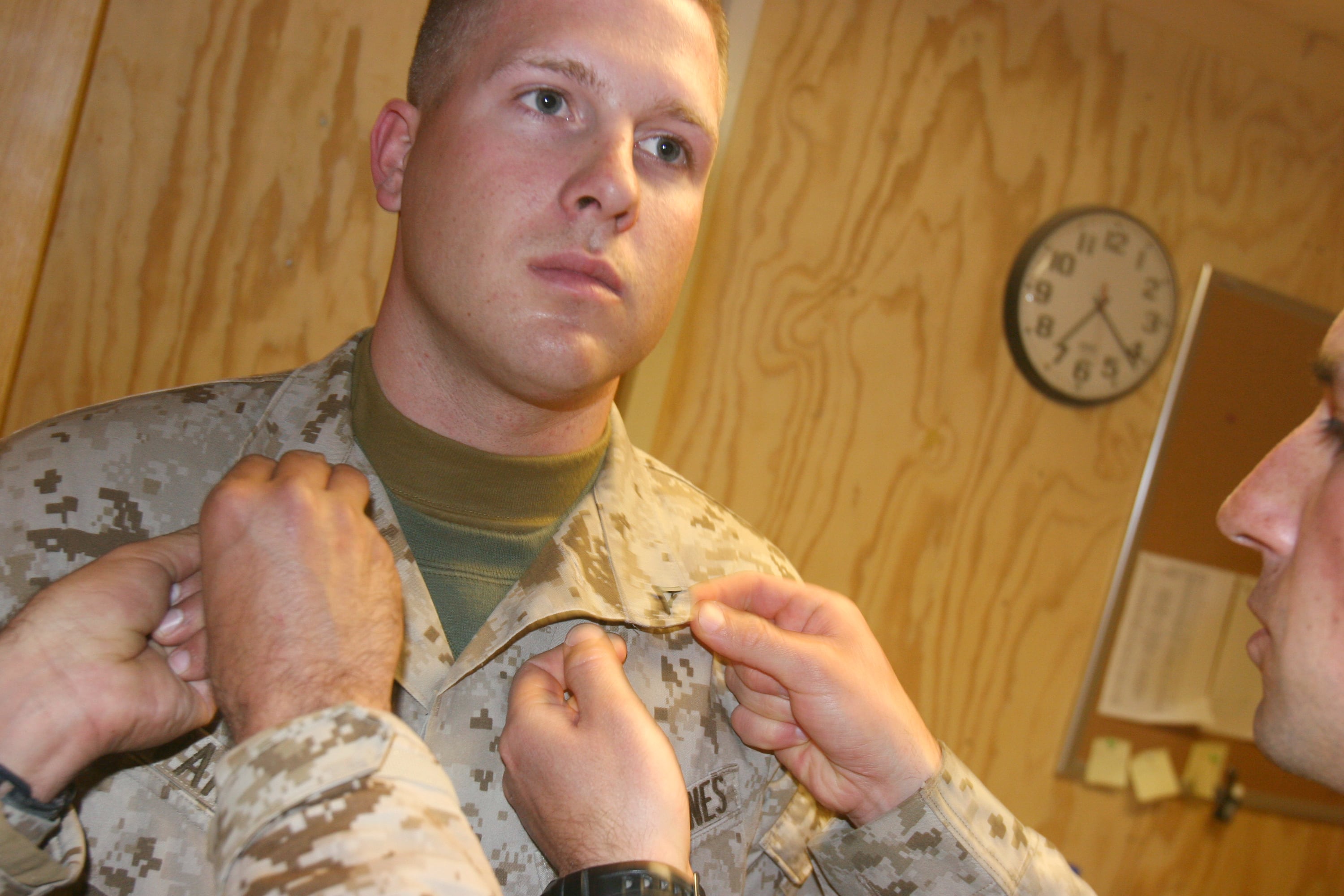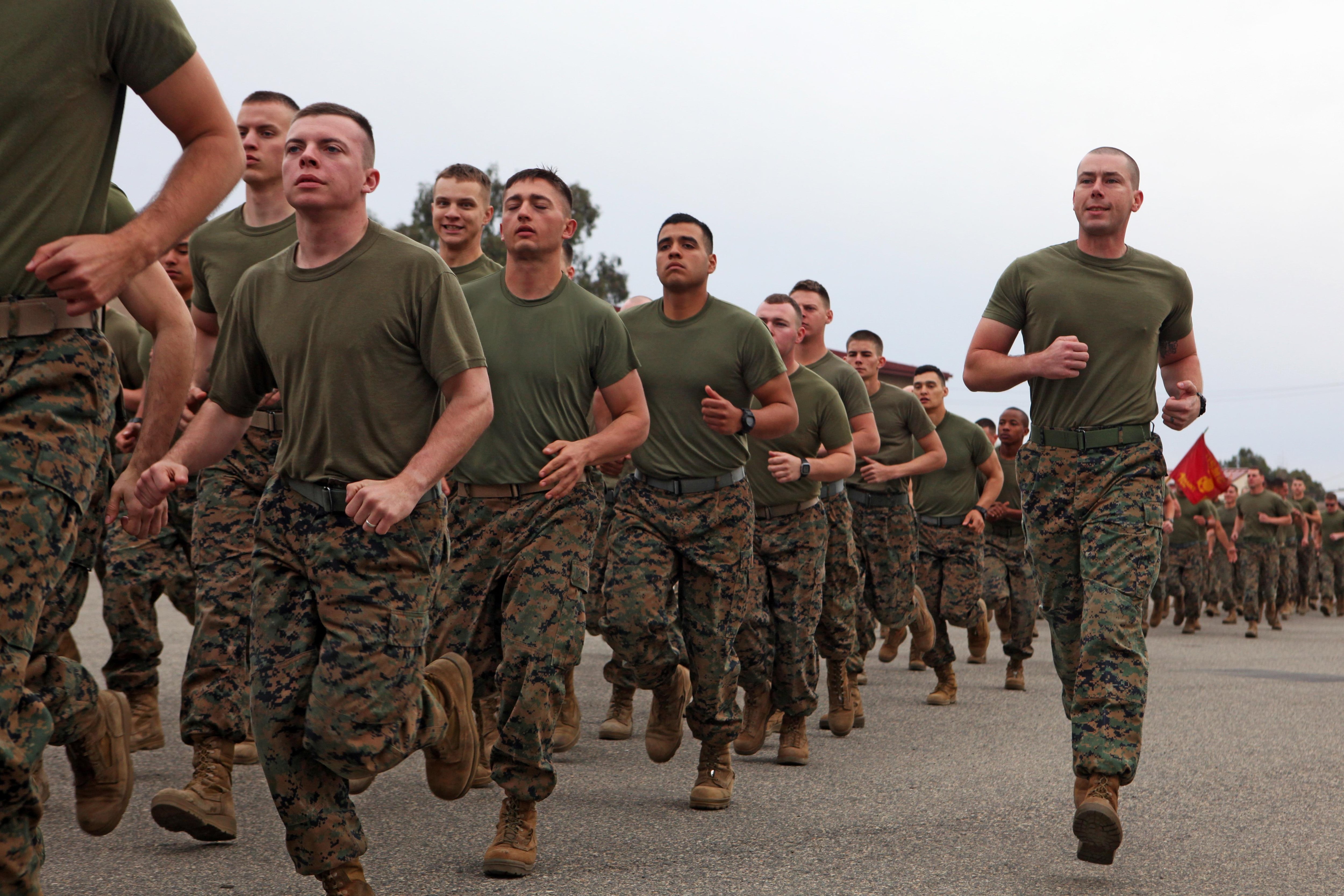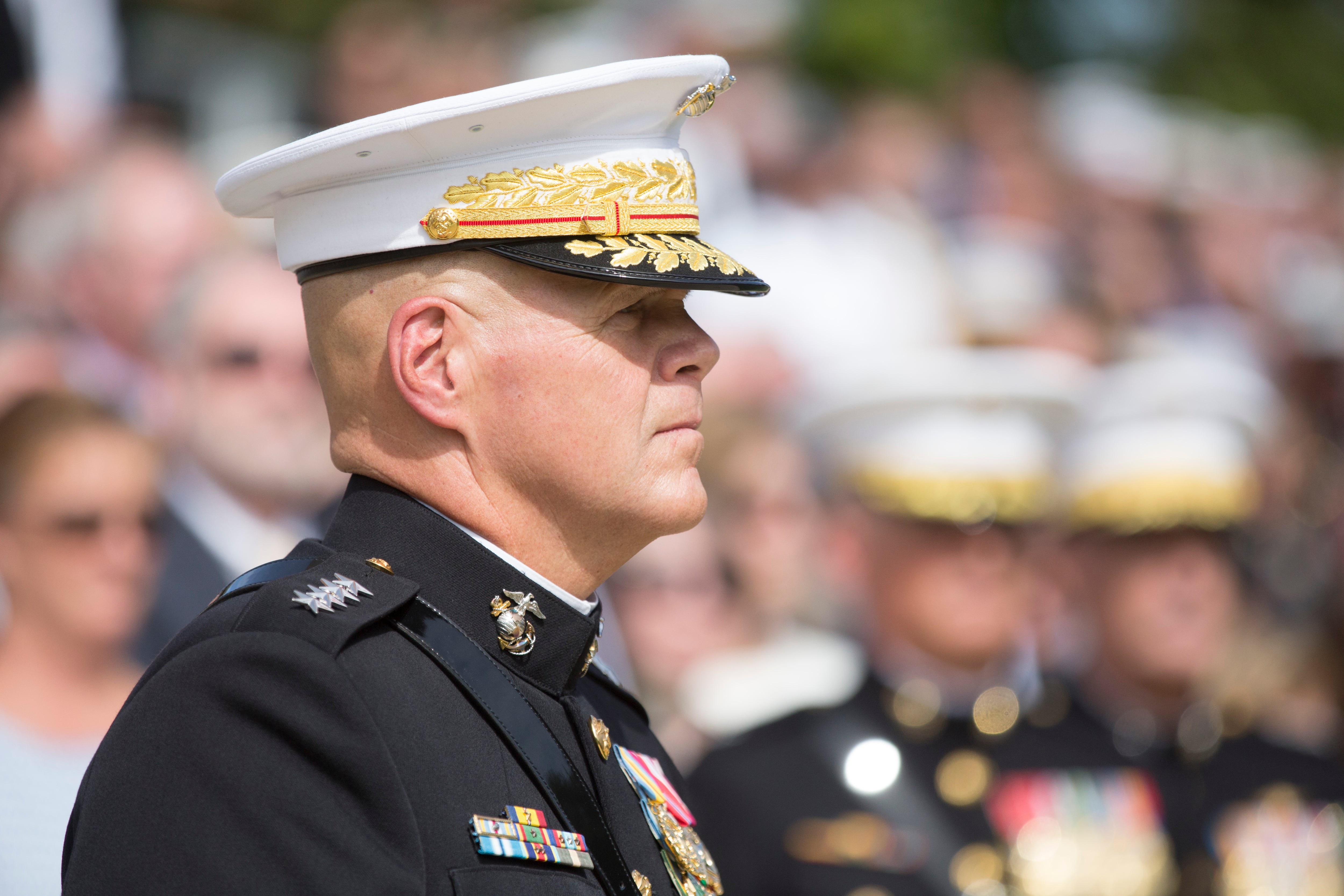Marine Corps Commandant Gen. Robert Neller has released his planning guidance for the next four years, which includes changes to how Marines are promoted, how units develop physical fitness programs and how the Marines Corps deploys.
Meeting the wide range of threats facing the nation will require Marines to be "smart, fit, disciplined, resilient, and able to adapt to uncertainty and to the unknown," Neller wrote in a fragmentary order to the planning guidance released last January by his predecessor, Gen. Joseph Dunford.
"Recruiting and retaining quality men and women of character in today's Corps is our friendly center of gravity and our highest priority," Neller wrote. "Among those that earn the title 'Marine,' we must ensure we recognize, promote and retain those who are the most competent, mature and capable leaders, and who are innovative and willing to implement change."

Lance Cpl. Cory Spargur gets meritoriously promoted to his current rank. Marine Commandant Gen. Robert Neller wrote in a service-wide memo that promotion policies for junior enlisted Marines could change.
Photo Credit: Lance Cpl. Clayton Vonderahe/Marine Corps
Toward that end, the Marine Corps will review the promotion process for lance corporals and corporals, the document said.
"We will review our existing Service-level promotion process, as well as the First and Subsequent Term Alignment Plan processes to ensure we are recognizing and retaining those who possess and exhibit the leadership, talent and skills for the future force," Neller wrote. "As part of this process, we will implement a time in grade (TIG) promotion review process at the unit level (Battalion/Squadron) for Lance Corporal to Corporal and Corporal to Sergeant."
Fitness is an important theme in Neller's guidance, which calls for the creation of new positions to oversee each unit's physical training regime.
"To ensure we are both physically fit and mentally tough, we will build a cadre of Force Fitness Instructors, assigned at the Company/Battery/Squadron level, who will be responsible to the commander for the development of the unit's physical training program," Neller wrote.
In November, Neller ordered a complete the Marine Corps’ Training and Education Command to to review conduct a thorough review of the service’s Physical Fitness Test, Combat Fitness Test and body composition standards by July 1.
The Marine Corps' fitness and body composition standards "must be relevant, challenging, and incentivize behaviors that enhance cardiovascular capacity, muscular strength, flexibility, agility, and the reduction of injuries," Neller wrote in a Nov. 9 all-Marine message.

Marines with Combat Logistics Regiment 15 complete a formation run. Commandant Gen. Robert Neller ordered a review of Marine fitness.
Photo Credit: Sgt. Sarah Fiocco/Marine Corps
One reason why Neller is stressing the need for Marines to be fit is that he intends to make sure the Marine Corps can deploy the maximum number of people at any given time.
"We will immediately and aggressively reduce the number of non-deployable Marines and Sailors, especially those injured during training," Neller wrote. "Part of this effort must address destructive behaviors. Abuse of alcohol, abuse of illegal and prescription drugs, sexual assault, hazing and other high risk behaviors all negatively impact the readiness of the team. Initiatives like Protect What You've Earned (PWYE) will be part of this effort."

Gen. Robert Neller at the Commandant's change of command at Marine Corps Barracks Washington, Sept. 24, 2015.
Photo Credit: Daniel Woolfolk/Staff
Neller first launched a campaign to curb excessive drinking last year when he was commander of Marine Corps Forces Command. He was inspired to act after learning that a California-based Marine, 1st Lt. Matthew Davis, was killed in November 2014 when he was hit by a drunk driver, who was allegedly a fellow Marine who had spent the night drinking.
The Marine Corps is "first and foremost a naval combined arms expeditionary force," so the service will review how Marines contribute to look at how Marines would be part of a naval campaigns during crisesin a crisis, Neller wrote.
"We will realign our waterfront and staff assignments by end of FY16 to ensure they meet the needs of our evolving relationship with the Navy," Neller wrote. "We will continue our efforts to determine the best use of alternate maritime platforms and look at different maritime force packaging options to better meet Combatant Command (CCMD) requirements."
"We will be willing to accept risk in the size and organization of our units in order to create the capabilities we need for the future," Neller wrote.
The review will look at how Marine units are organized based on what resources are available, the Marine Corps' current commitments across the world, and the constantly changing threat environment, Neller wrote.
"We will look at the total force, both the Active and Reserve Components, but will focus initially on the organization of the Marine Air Ground Task Force (MAGTF) Command Element, the Division, the Air Wing, the Logistics Group, and the Supporting Establishment, in order to: 1) validate the structure and task/skill profiles we require to increase our breadth and depth of expertise; 2) pay our manpower bills; 3) make structure changes necessary to meet future force requirements," Neller wrote.
The Marine Corps will continue to repair, refurbish and replace equipment coming out of the war zone, especially aircraft, and the service will conduct quarterly readiness reviews that will go all the way to the commandant's level, Neller wrote.
"We will maintain and man our bases and stations to enable deployment for contingencies, provide realistic training, and provide the support to Marines and families that is essential to their preparedness and resilience to live successfully in our high operational tempo culture," Neller wrote.
To best simulate potential adversaries, Marines will train to fight against a "thinking enemy," Neller wrote. As in actual operations, training will emphasize "decentralizing authority and placing accountability down to the lowest level of leadership," he wrote.
"We will re-emphasize that Marines and Sailors of all ranks have the responsibility to educate themselves," he wrote. "Commanders will enable educational opportunities and will conduct unit level PME [professional military education] for all ranks."
Training exercises will seek to be conducted in as close to combat conditions as possible, includinged degraded command, control, communications, computers and intelligence, Neller wrote.
In Eastern Ukraine, the Russians have often used electronic warfare to jam the Ukrainians' communications, radar and GPS, all of which would be new challenges for U.S. troops.
Neller has called for the Marine Corps to enhance its electronic warfare capabilities for forward deployed Marines by the end of fiscal 2017.
The Marine Corps recently announced that 240 enlisted female Marines who successfully completed training for ground combat arms will officially be able to move into those jobs. Beginning on April 1, the Marine Corps will begin assigning qualified female Marines to military occupational specialties and units that had been male only, Neller wrote.
"This process will be done in a responsible, measured, deliberate, and standards-based manner, in order to ensure both the combat readiness of the units involved and the success of the Marines assigned to them," Neller wrote. "We will continue to collect data on all aspects of the process in order to further our understanding of the impacts of our actions, both to units and to individual Marines."




